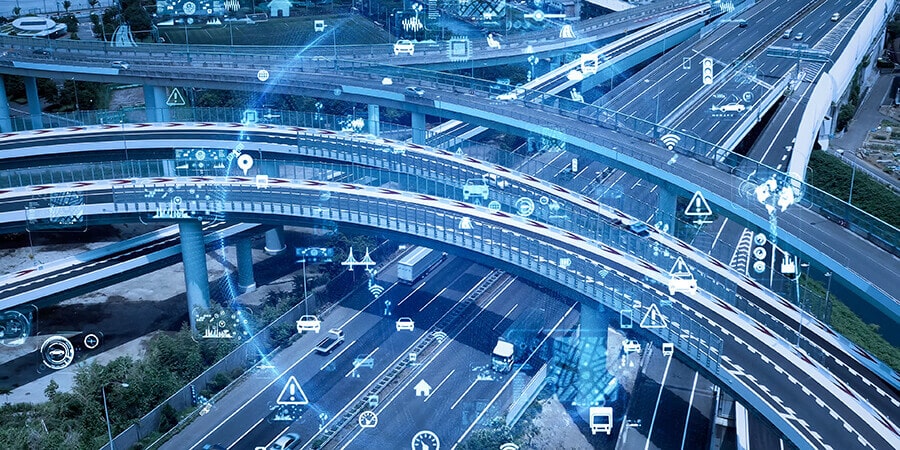The Asia-Pacific region, known for its vast and diverse landscapes, is undergoing a monumental transformation in its transportation infrastructure. From bustling metropolises to remote rural areas, technological advancements are driving a revolution in mobility and connectivity. The convergence of innovation, investment and sustainability is shaping a future where transportation becomes more efficient, accessible and environmentally friendly.
Embracing Technological Trends
According to statistics provided by GlobalData, the Asia Pacific region saw an issued total of 1 billion standard debit cards in 2021, with a projected growth of over 30% expected by 2025. Simultaneously, the unique mobile penetration rate surpassed 1.6 billion. Despite its prominent position in card usage, the region's private and municipal transport operators are missing out on opportunities to attract new audiences due to the limited adoption of diverse payment methods and technologies.
However, an increasing focus on digitalization and environmental transformation has emerged on the agendas of several governments in the region, such as Thailand, Indonesia, the Philippines, Vietnam, and others. They are actively exploring avenues to foster the development of sustainable and accessible transportation systems, both within smart cities and beyond, employing various modes of transit.
Indonesia, for instance, has made significant strides in this direction by establishing a Bus Rapid Transit (BRT) network with government support. Accessible transportation services have been implemented with fixed pricing and complimentary amenities for different segments of the population. The system underwent modernization, incorporating automated fare collection systems and card payments to enhance service availability and transparency. The Indonesian government's next focus is to further enhance multi-modal accessibility across the city.
In Thailand, the government has taken a proactive role in upgrading rail and metro lines within cities, with a particular emphasis on Bangkok. This initiative aims to create a multi-modal environment for citizens and enhance transit speed within urban areas.
Meanwhile, in response to the escalating urban density and mounting traffic congestion, the Department of Transportation (DOTr) in the Philippines has embarked on the modernization of its most widely used urban transportation modes, minibuses and jeepneys. This modernization includes the adoption of automated fare collection systems, enabling contactless payments and introducing digital ticketing to offer a new and more convenient experience for travelers in Metro Manila.
Infrastructure Networks Links
The Asia-Pacific region encompasses a diverse array of nations, each characterized by varying government systems, economic growth trajectories, population sizes, and geopolitical positions. In the context of Intelligent Transport Systems (ITS) development, this region spans a spectrum, featuring countries with well-advanced ITS infrastructures alongside those that have only established rudimentary traffic operation systems.
To assess the progress of ITS development in Asia and the Pacific, a holistic approach has been adopted. It involves delineating each phase of ITS development at the macroscopic level and subsequently evaluating the advancements made by selected countries in this domain.
Asia's transportation infrastructure is not confined to its own borders. The United Nation’s Economic and Social Commission for Asia and the Pacific (ESCAP) report highlights the importance of interconnected transportation networks, not only within the region but also linking Asia to Europe. This interregional collaboration is key for global trade and economic growth.
The significance of connectivity between Asia and Europe on a global scale is expected to persist. Given the substantial trade flows between these two regions, it is clear that there is a high demand for freight transport. Establishing an efficient and sustainable transport network that facilitates the smooth movement of goods and services between the European Union and Asia holds the potential to drive economic growth, create job opportunities, enhance global competitiveness, and promote trade.
Recognizing this, ESCAP has incorporated sustainable transport connectivity between Asia and Europe as one of the key areas of focus within its Regional Action Programme for Sustainable Transport Connectivity in Asia and the Pacific (Phase I, 2017-2021). The primary objective of this initiative is to bolster transport connectivity between these two regions by concentrating on infrastructure development and the alignment of technical standards.
Ultimately, the goal is to establish an inter-regional, coordinating body that can harmonize existing mandates, initiate collaborative actions, and assess progress to foster a seamless, sustainable, and resilient transport network for both passengers and freight.
A Promising Future
As the Asia-Pacific region continues to grow and urbanize, the demand for efficient and sustainable transportation will only increase. The collaboration between governments, international organizations and the private sector is fostering a climate of innovation and investment, enabling the region to build a robust and resilient transportation infrastructure.
This dynamic transformation is not only about moving people and goods but also about connecting communities and fostering economic growth. The Asia-Pacific region is poised to be at the forefront of technology-driven transportation infrastructure, paving the way for a more connected, accessible and sustainable future. As the region continues to navigate its future, the road ahead is marked by endless possibilities.





